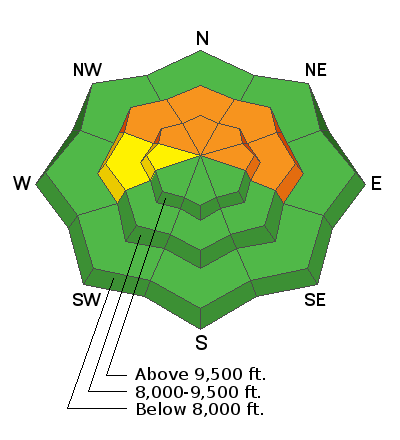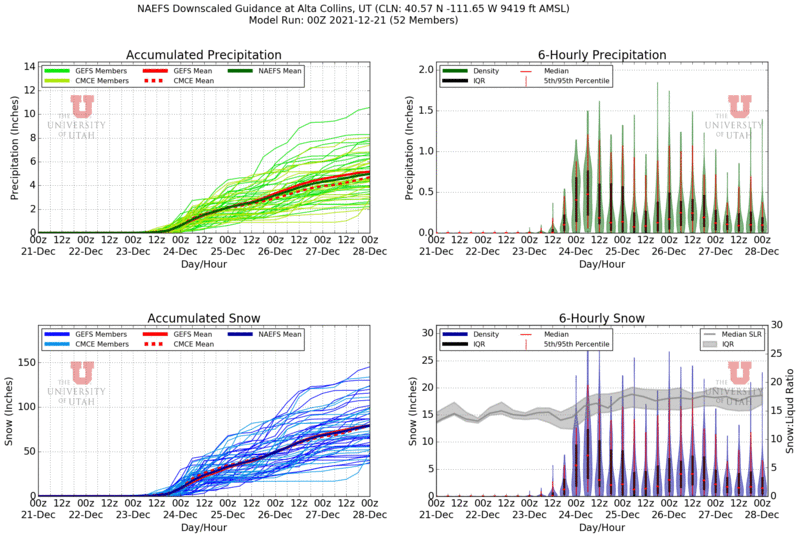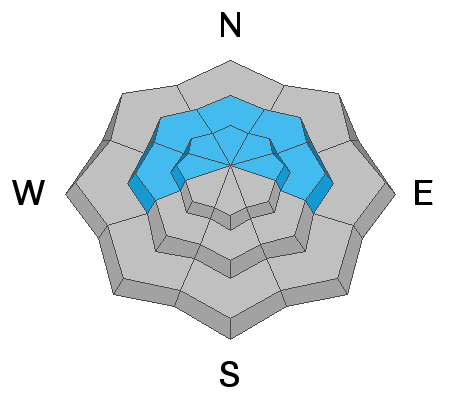HEADS UP: With lots of wind & snow in the forecast, the avalanche danger will be on the rise starting Thursday and will continue to be dangerous through the holiday break. Please share the word with friends, family, and riding partners that conditions will continue to be dangerous and deadly here in Northern Utah, especially as the new snow stacks up. Be careful, friends.
High pressure will lead to another beautiful day in the mountains with calm winds and warm temperatures. Currently, the mountain temperatures hover in the 20's °F at the mid and upper elevations. Down lower in the canyon and the valley bottoms, the temperatures hover in the mid-teens °F. Winds are blowing from the west-southwest at speeds of 10-15 mph, with the occasional gust into the 20's across the upper ridgelines.
Buckle up! It's going to get wild here in Northern Utah. The extended weather forecast is nothing but storms for the foreseeable future. All this weather begins Wednesday night and easily lasts into next week with inches of water and feet of snow. YES, that picture below shows a mean of the ensemble members at 75" of snow with 5.50" of water. I wouldn't hold your breath for those numbers, but it's fun to imagine, and it's possible. I usually don't get this excited, but it's hard not to.
No new avalanches were reported from the backcountry yesterday. However, reports of large booming collapses and poor snowpack structure continue to be observed by backcountry travelers.










